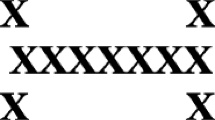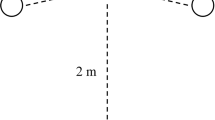Abstract
Psittacines are generally considered to possess cognitive abilities comparable to those of primates. Most psittacine research has evaluated performance on standardized complex cognition tasks, but studies of basic cognitive processes are limited. We tested orange-winged Amazon parrots (Amazona amazonica) on a spatial foraging assessment, the Hamilton search task. This task is a standardized test used in human and non-human primate studies. It has multiple phases, which require trial and error learning, learning set breaking, and spatial memory. We investigated search strategies used to complete the task, cognitive flexibility, and long-term memory for the task. We also assessed the effects of individual strength of motor lateralization (foot preference) and sex on task performance. Almost all (92 %) of the parrots acquired the task. All had significant foot preferences, with 69 % preferring their left foot, and showed side preferences contralateral to their preferred limb during location selection. The parrots were able to alter their search strategies when reward contingencies changed, demonstrating cognitive flexibility. They were also able to remember the task over a 6-month period. Lateralization had a significant influence on learning set acquisition but no effect on cognitive flexibility. There were no sex differences. To our knowledge, this is the first cognitive study using this particular species and one of the few studies of cognitive abilities in any Neotropical parrot species.





Similar content being viewed by others
References
Aengus WL, Millam JR (1999) Taming parent-reared orange-winged amazon parrots by neonatal handling. Zoo Biol 18:177–187
Aguado L, Symonds M, Hall G (1994) Interval between preexposure and test determines the magnitude of latent inhibition: implications for an interference account. Anim Learn Behav 22:188–194
Auersperg AM, Kacelnik A, von Bayern AMP (2013) Explorative learning and functional inferences on a five-step means–means-end problem in Foggin’s cockatoos (Cacatua goffini). PLoS ONE 8:e68979
BirdLife International (2012) Amazona amazonica. In: IUCN 2013. IUCN red list of threatened species. Version 2013.1. www.iucnredlist.org. Downloaded on 09 July 2013
Brown C, Magat M (2011a) Cerebral lateralization determines hand preference in Australian parrots. Biol Lett 7:496–498
Brown C, Magat M (2011b) The evolution of lateralized foot use in parrots: a phylogenetic approach. Behav Ecol 6:1201–1208
de Mendonca-Furtado O, Ottoni EB (2008) Learning generalization in problem solving by a blue-fronted parrot (Amazona aestiva). Anim Cogn 11:719–725
Emery NJ (2006) The evolution of avian intelligence. Proc R Soc B 361:23–43
Emery NJ, Seed AM, von Bayern AMP, Clayton NS (2007) Cognitive adaptations of social bonding in birds. Proc R Soc B 362:489–505
Funk MS (1996) Development of object permanence in the New Zealand parakeet (Cyanoramphus auriceps). Anim Learn Behav 24:375–383
Funk MS (2002) Problem solving skills in young yellow-crowned parakeets (Cyanoramphus auriceps). Anim Cogn 5:167–176
Funk MS, Matteson RL (2004) Stable individual differences on developmental tasks in young yellow-crowned parakeets, Cyanoramphus auriceps. Learn Behav 32:427–439
Gajdon GK, Fijn N, Huber L (2004) Testing social learning in a wild mountain parrot, the kea (Nestor notabilis). Learn Behav 32:62–71
Gajdon GK, Fijn N, Huber L (2006) Limited spread of innovation in a wild parrot, the kea (Nestor notabilis). Anim Cogn 9:173–181
Gajdon GK, Ortner TM, Wolf CC, Huber L (2013) How to solve a mechanical problem: the relevance of visible and unobservable functionality for kea. Anim Cogn 16:483–492
Gossette RL, Gossette MF, Riddell W (1966) Comparisons of successive discrimination reversal performances among closely and remotely related avian species. Anim Behav 14:560–564
Ha JC, Mandell DJ, Gray J (2011) Two-item discrimination and Hamilton search learning in infant pigtailed macaque monkeys. Behav Process 86:1–6
Hamilton GV (1911) A study of trial and error reactions in mammals. J Anim Behav 1:33–66
Harris LJ (1989) Footedness in parrots: three centuries of research, theory, and mere surmise. Can J Psych 43:369–396
Huber L, Gajdon GK (2006) Technical intelligence in animals: the kea model. Anim Cogn 9:295–305
Isler K, Schaik CPV (2009) Why are there so few smart mammals (but so many smart birds)? Biol Lett 5:125–129
Iwaniuk AN, Hurd PL (2005) The evolution of cerebrotypes in birds. Brain Behav Evol 65:215–230
Iwaniuk AN, Dean KM, Nelson JE (2005) Interspecific allometry of the brain and brain regions in parrots (Psittaciformes): comparisons with other birds and primates. Brain Behav Evol 65:40–59
Jarvis ED, Güntürkün O, Bruce L, Csillag A, Karten H, Kuenzel W, Medina L, Paxinos G, Perkel DJ, Shimizu T, Striedter G, Wild JM (2005) Avian brains and a new understanding of vertebrate brain evolution. Nat Rev Neurosci 6:151–159
Liedtke J, Werdenich D, Gajdon GK, Huber L, Wanker R (2011) Big brains are not enough: performance of three parrot species in the trap-tube paradigm. Anim Cogn 14:143–149
Magat M, Brown C (2009) Laterality enhances cognition in Australian parrots. Proc R Soc B 276:4155–4162
Pepperberg IM (2004) “Insightful” string-pulling in grey parrots (Psittacus erithacus) is affected by vocal competence. Anim Cogn 7:263–266
Pepperberg IM (2006) Grey parrot numerical competence: a review. Anim Cogn 9:377–391
Pepperberg IM, Willner MR, Gravitz LB (1997) Development of piagetian object permanence in a grey parrot (Psittacus erithacus). J Comp Psychol 111:63–75
Peron F, Rat-Fischer L, Lalot M, Bovet D (2011) Cooperative problem solving in African grey parrots (Psittacus erithacus). Anim Cogn 14:545–553
Piddington T, Rogers L (2013) Strength of hand preference and dual task performance by common marmosets. Anim Cogn 16:127–135
Reiner A (2005) The new avian brain nomenclature: why, how and what. Brain Res Bull 66:317–331
Rogers LJ (1996) Behavioral, structural and neurochemical asymmetries in the avian brain: a model system for studying visual development and processing. Neurosci Biobehav Rev 20:487–503
Rogers LJ (2000) Evolution of hemispheric specialization: advantages and disadvantages. Brain Lang 73:236–253
Rogers LJ (2009) Hand and paw preferences in relation to the lateralized brain. Proc R Soc B364:943–954
Rozek JC, Millam JR (2011) Preference and motivation for different diet forms and their effect on motivation for a foraging enrichment in captive orange-winged amazon parrots (Amazona amazonica). Appl Anim Behav Sci 129:153–161
Schuck-Paim C, Alonso WJ, Ottoni EB (2008) Cognition in an ever-changing world: climatic variability is associated with brain size in neotropical parrots. Brain Behav Evol 71:200–215
Schuck-Paim C, Borsari A, Ottoni EB (2009) Means to an end: neotropical parrots manage to pull strings to meet their goals. Anim Cogn 12:287–301
Shettleworth SJ (2009) The evolution of comparative cognition: is the snark still a boojum? Behav Process 80:210–217
Tavares ES, Baker AJ, Pereira SL, Miyaki CY (2006) Phylogenetic relationships and historical biogeography of neotropical parrots (Psittaciformes: Psittacidae: Arini) inferred from mitochondrial and nuclear DNA sequences. Syst Biol 55:454–470
Westbrook RF, Bouton ME (2010) Latent inhibition and extinction: their signature phenomena and the role of prediction error. In: Lublow R, Weiner I (eds) Latent inhibition: cognition, neuroscience, and applications to schizophrenia. Cambridge University Press, New York, pp 23–39
Young AM, Hobson EA, Bingaman Lackey L, Wright TF (2012) Survival on the ark: life-history trends in captive parrots. Anim Conserv 15:28–43
Acknowledgments
This research was supported by the W.K. Kellogg Endowment and the Psittacine Research Project; V.A.C. was also supported by the Jastro Shields Research Fellowship, Kratzer, Ogasawara, Vohra Scholarship, and the Hart, Cole, Goss Fellowship. We gratefully acknowledge the infrastructure support of the Department of Animal Science, College of Agricultural and Environmental Sciences, and the California Agricultural Experiment Station of the University of California-Davis. V.A.C. thanks the many undergraduate student interns that worked to socialize the parrots, especially Sarah Mounedji and Kelsey James Kavanaugh, as well as the staff at the UC Davis Hopkins Avian Research Facility, especially Kristy Smith. We are grateful to James Ha for constructive suggestions on implementing the Hamilton Search Task.
Author information
Authors and Affiliations
Corresponding author
Rights and permissions
About this article
Cite this article
Cussen, V.A., Mench, J.A. Performance on the Hamilton search task, and the influence of lateralization, in captive orange-winged Amazon parrots (Amazona amazonica). Anim Cogn 17, 901–909 (2014). https://doi.org/10.1007/s10071-013-0723-y
Received:
Revised:
Accepted:
Published:
Issue Date:
DOI: https://doi.org/10.1007/s10071-013-0723-y




